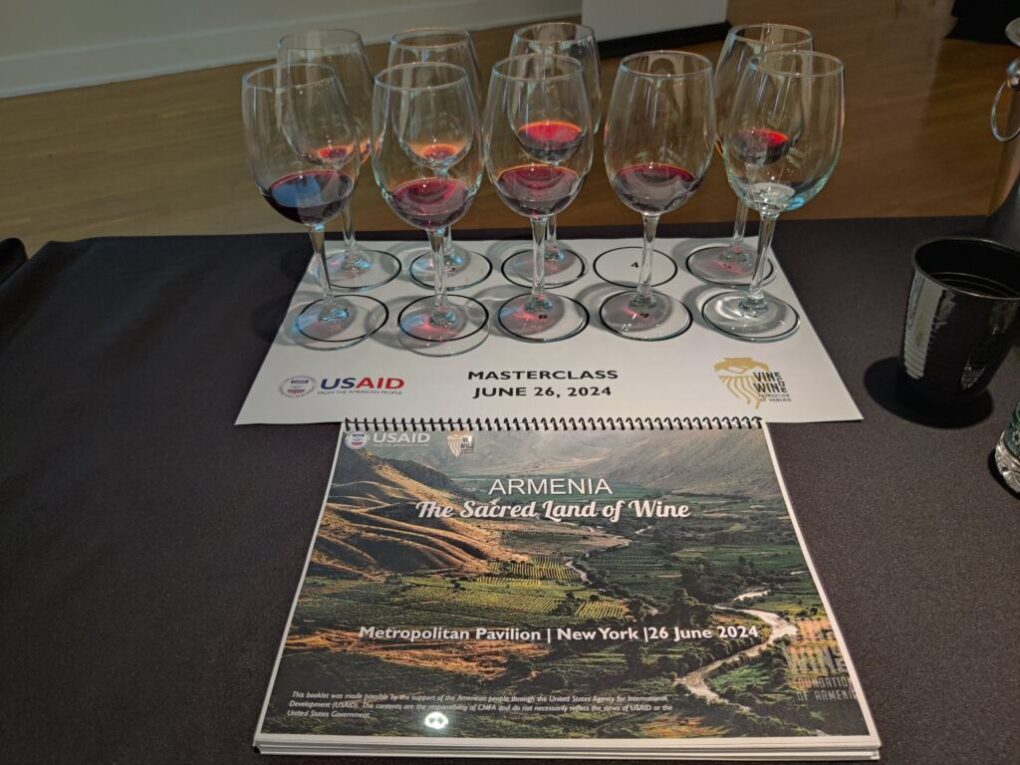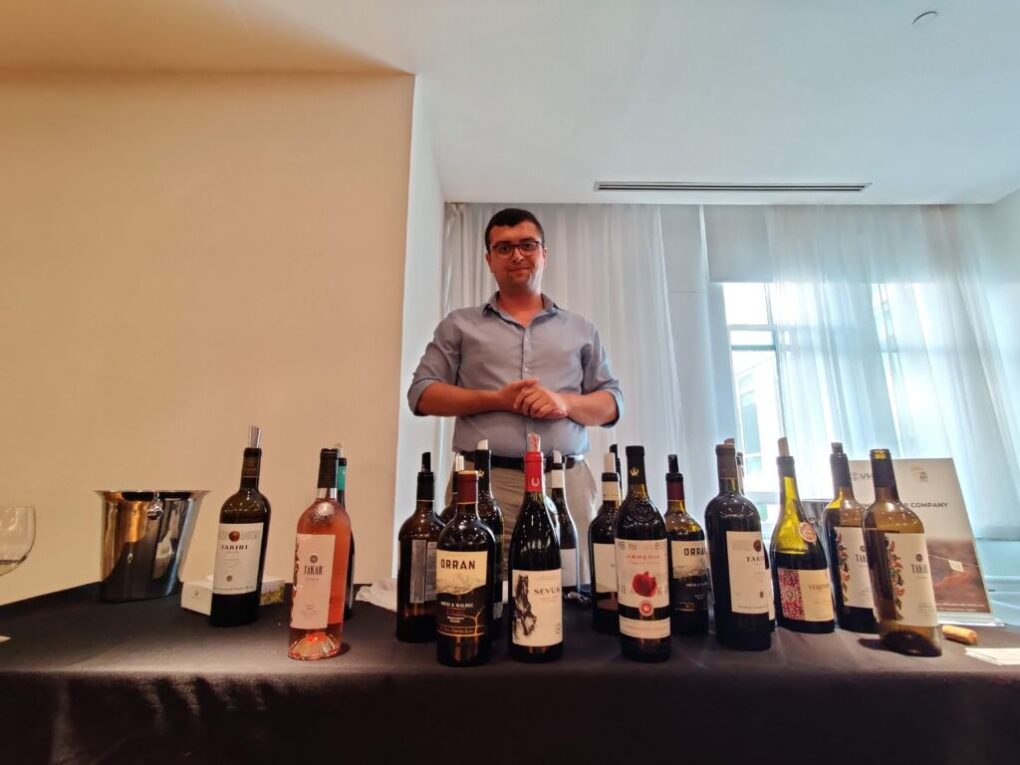
When it comes to recognition on the global wine stage, Eurasian wine territory remains largely untapped, especially in comparison to its counterparts in Western Europe. Armenia is located in South Caucasus in Eurasia. It’s bordered by Turkey to the west, Georgia to the north, Azerbaijan to the east, and Iran to the south. The Armenian landscape is characterized by valleys, rivers, and lakes, and dominated by the Lesser Caucasus, and Mount Aragats, a volcanic massif rising 4,090 meters above sea level in the north.
The climate in Armenia is similarly diverse. It can be Mediterranean, with typically cool and wet winters, and dry and hot summers, or more highland at greater elevations, with lower average temperatures, and precipitation concentrated at various times of the year. The combination of a varied landscape and climate presents an ideal environment for cultivating Armenia’s approximately 400 autochthonous grapes. Evidence of wine production in Armenia that dates back to ancient times includes the discovery of an over 6000-year-old winery during an archeological excavation of the Areni-1 caves in Vayots Dzor, a winemaking region known for its century-old ungrafted vines planted on volcanic soil. Armenia’s other major wine regions include Ararat, Armavir, Aragatsotn, and Tavush.
Ancient winemaking practices and traditions continued to evolve through the centuries, and by the Middle Ages monks had become authorities in vineyard management and wine production techniques, partly because wine was regularly used in religious ceremonies. Wine production in Armenia was collectivized in the early 20th century under Soviet rule, and for almost 70 years since then, Armenian wine became synonymous with quantity as opposed to quality due to the shift towards mass-production techniques that resulted in large volumes of often poorly crafted wine.
Quality Armenian wine production underwent a renaissance after the nation achieved independence in 1991. For the past 3 decades, winemaking has been once again concentrated in the hands of mostly small, family-owned wineries that aim to produce distinctive, terroir-driven wines from autochthonous varietals, using a combination of traditional and modern winemaking techniques.
Autochthonous white varietals like Lalvari, Voskehat, Garan Dmak, Khatoun, Kangun, and Mskhali and red varietals such as Karmrahyut, Milagh, Sev Areni, Tigrani, Haghtanak, Kakhet, and Tozot are commonly cultivated in these regions to produce an eclectic array of wines that reflect the unique Armenian terroir. Here’s a list of the grapes typically grown in each region:
Ararat: Garan Dmak, Mskhali, Karmrahyut, and Milagh
Armavir: Garan Dmak, Mskhali, Kangun, and Haghtanak
Tavush: Banants, Lalvari, Koghbeni, and Jrjr Uk
Aragatsotn: Voskehat, Kangun, Akhtanak, and Rkatsiteli
Vayots Dzor: Sev Areni and Voskehat
The whites and rose’s stand out among Armenia’s many different varietals. Here’s a list of wineries offering some noteworthy selections:

Keush (Vayots Dzor)
Keush, Extremis Brut Rose’, 2020
100% Areni sourced from 60- to 100-year-old vines grown in vineyards located 1750 meters above sea level (asl)
Crisp, with balanced acidity and minerality, and notes of citrus and orchard fruit, cream, and sweet herbs.
Savar (Vayots Dzor)
Savar Khatoun Kharji, 2022
100% Khatoun Kharji sourced from vineyards located 1350 meters (asl).
Refreshing and vivacious, with an energetic acidity, and notes of grapefruit, lemon, and pineapple.
Armenia Wine (Aragatsotn)
Takar Kangun, 2021
100% Kangun grown in vineyards located 1000 meters (asl). Aged in oak barrels. (Kangun is also used to make Armenian brandy.)
Fresh and elegant, with notes of white and yellow flowers, peach, papaya, quince, and honey.

Voskevaz Winery (Aragatsotn)
Voskevaz Karasi Collection, Voskevaz, 2017
100% Voskevaz fermented in clay vessels and aged in oak barrels.
Medium-bodied and structured, with notes of fresh flowers, citrus and orchard fruit, and scented wood.
Highland Cellars (Vayots Dzor)
Koor, Voskehat, 2014
100% Voskehat sourced from vineyards cultivated on soil rich in limestone and volcanic elements.
Rich and aromatic, with a subtle minerality and spiciness, and peach, apricot, mango, and pineapple notes.
Nor Areni (Vayots Dzor)
Nor Areni, Voskehat, 2019
100% Voskehat grown on vineyards located 1233 meters (asl). Fermented in stainless steel tanks.
Crisp and balanced, with young peach, apricot, and green apple notes.
Voskeni (Ararat Valley)
Voskeni, Siro Rose’ Areni, 2018
100% Areni sourced from vineyards cultivated on soil rich in sand, limestone, and volcanic elements. Fermented in stainless steel tanks.
Fresh, with a bright acidity, delicate minerality, and mixed red berry and stone fruit notes.


Manukyan Wine (Vayots Dzor)
Kouash, Areni Rose’ Manukyan, 2022
100% Areni aged on the lees and fermented in stainless steel tanks.
Refreshing and structured, with a soft acidity, and white flower, and young strawberry and raspberry notes.
Jraghatspanyan Winery (Ararat Valley)
Jraghatspanyan, Tigrani Rose’, 2019
100% hand-harvested Tigrani fermented in stainless steel tanks.
Fresh and crisp, with lively red berry and tropical fruit notes.

Be First to Comment